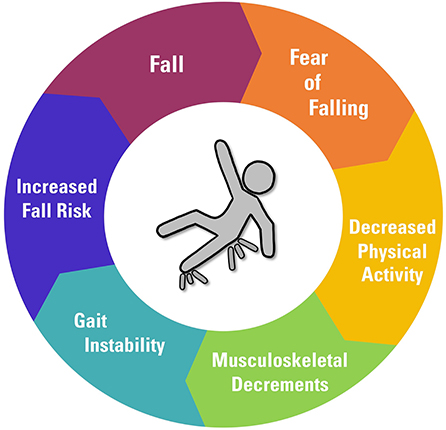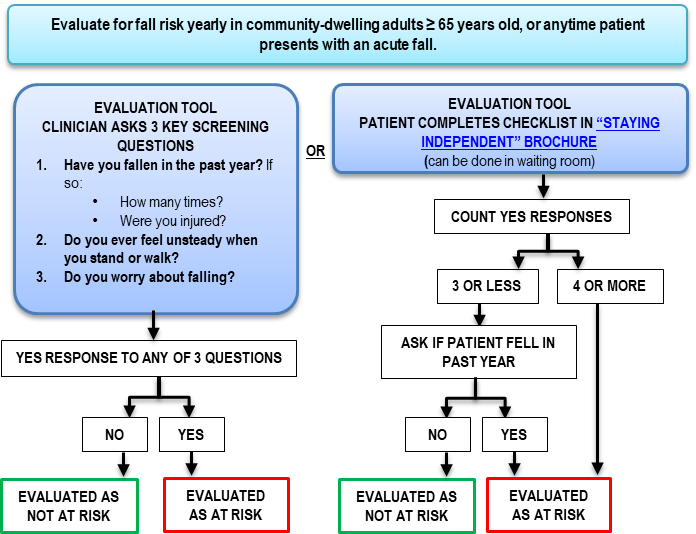Things about Dementia Fall Risk
Table of ContentsOur Dementia Fall Risk IdeasThe Ultimate Guide To Dementia Fall RiskThe Best Guide To Dementia Fall RiskGetting The Dementia Fall Risk To Work
A loss danger assessment checks to see just how most likely it is that you will drop. The analysis typically includes: This consists of a series of questions regarding your total health and wellness and if you've had previous drops or issues with balance, standing, and/or strolling.Treatments are referrals that might minimize your threat of falling. STEADI includes 3 steps: you for your risk of falling for your threat elements that can be boosted to attempt to stop falls (for example, balance problems, impaired vision) to minimize your threat of falling by utilizing reliable approaches (for instance, offering education and learning and resources), you may be asked numerous concerns including: Have you fallen in the previous year? Are you worried concerning dropping?
After that you'll take a seat once more. Your provider will certainly examine the length of time it takes you to do this. If it takes you 12 secs or more, it might mean you go to higher danger for a loss. This examination checks stamina and balance. You'll sit in a chair with your arms crossed over your breast.
Move one foot midway onward, so the instep is touching the large toe of your various other foot. Move one foot totally in front of the various other, so the toes are touching the heel of your various other foot.
9 Simple Techniques For Dementia Fall Risk
Many drops occur as an outcome of multiple adding variables; as a result, managing the threat of falling starts with identifying the variables that add to fall danger - Dementia Fall Risk. A few of one of the most pertinent risk aspects consist of: History of prior fallsChronic clinical conditionsAcute illnessImpaired stride and balance, lower extremity weaknessCognitive impairmentChanges in visionCertain risky medications and polypharmacyEnvironmental variables can also enhance the threat for drops, including: Inadequate lightingUneven or damaged flooringWet or slippery floorsMissing or harmed hand rails and grab barsDamaged or poorly fitted tools, such as beds, wheelchairs, or walkersImproper use assistive devicesInadequate supervision of individuals staying in the NF, consisting of those who show aggressive behaviorsA successful loss danger administration program calls for an extensive clinical assessment, with input from all members of the interdisciplinary team

The care strategy need to additionally consist of treatments that are system-based, such as those that advertise a risk-free environment (suitable lighting, handrails, grab bars, and so on). The efficiency of the interventions ought to be reviewed occasionally, and the treatment plan changed as required to show changes in the fall threat assessment. Applying a fall threat management system making use of evidence-based best technique can lower the occurrence of falls in the NF, while limiting the possibility for fall-related injuries.
The Facts About Dementia Fall Risk Revealed
The AGS/BGS standard suggests screening all adults aged 65 years and older for autumn risk each year. This screening includes asking clients whether they have fallen 2 or even more times in the past year or looked for clinical attention for a loss, or, if they have not dropped, whether they feel unstable when walking.
Individuals that have actually fallen once without injury ought to have their balance and stride assessed; those with stride or balance problems ought to obtain extra evaluation. A background of 1 fall without injury and without stride or balance troubles does not warrant additional analysis beyond ongoing yearly fall risk testing. Dementia Fall Risk. An autumn danger assessment is called for as component of the Welcome to Medicare examination

About Dementia Fall Risk
Documenting a falls background is one of the look at this website top quality signs for autumn prevention and monitoring. Psychoactive medicines in specific are independent predictors of drops.
Postural hypotension can often be alleviated by reducing the dose of blood pressurelowering medicines and/or quiting medications that have orthostatic hypotension as a negative effects. Use above-the-knee assistance pipe and copulating the head of the bed elevated might likewise reduce postural decreases in high blood pressure. The advisable elements of a fall-focused health examination are received Box 1.

A Pull time better than or equal to 12 seconds recommends high loss risk. Being not able to stand up from a chair of knee height without using one's arms suggests boosted fall danger.